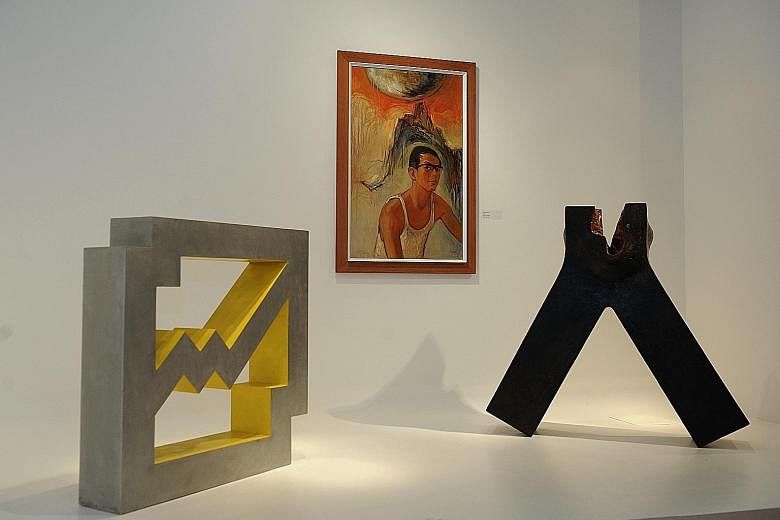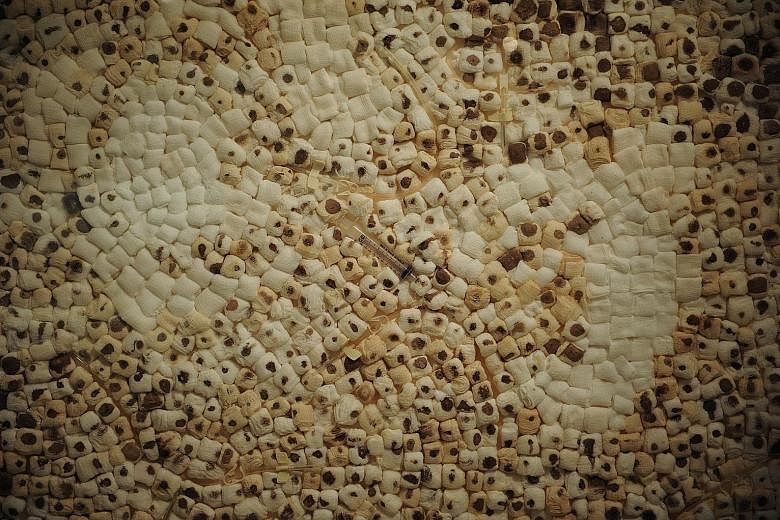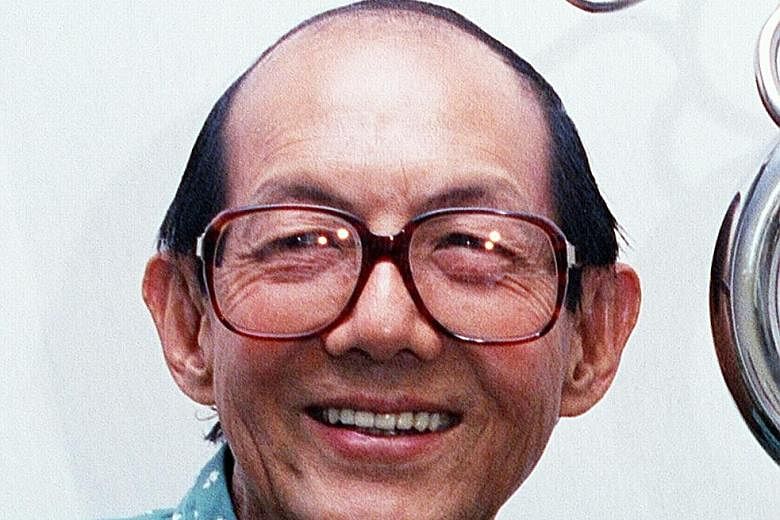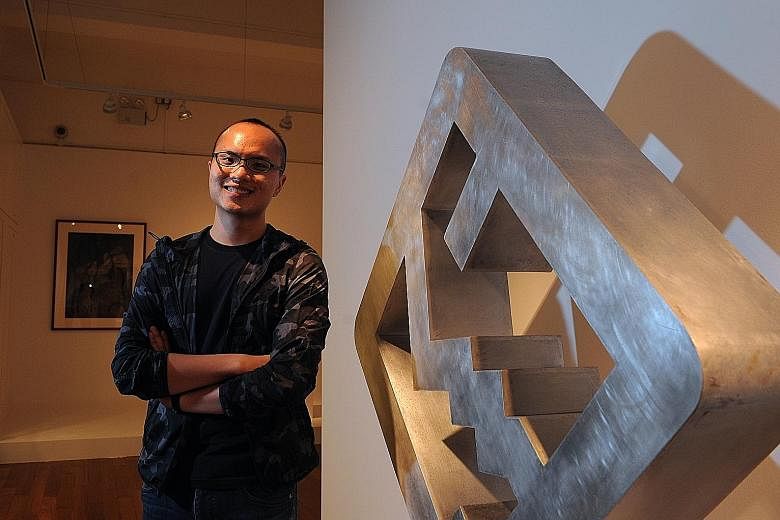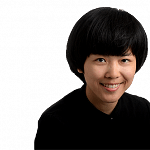A new exhibition on the work of prominent Singapore artist Ng Eng Teng has broken out of the usual mould because of the curator's idiosyncrasy.
Mr Kenneth Tay, who oversees the Ng Eng Teng Collection and Gallery at the National University of Singapore Museum, where the new show is held, used to be bothered by Ng's name.
Something about it nettled him, but he could not put his finger on what exactly until one day, when he noticed patterns in the name.
Each word in the name ends with the preceding word and the letters "ng" are repeated at the end of every word in the name.
This curious repetition led him down a rabbit hole, seeking recurring elements in Ng's body of work and eventually arriving at the series of geometric sculptures titled 1+1=1.
The series was developed by the artist between 1990 and 1996 and it headlines the show, which is titled, Ng Eng Teng: 1+1=1.
-
VIEW IT / NG ENG TENG: 1+1=1
-
WHERE: Ng Eng Teng Gallery, National University of Singapore Museum, 50 Kent Ridge Crescent
WHEN: 10am to 7.30pm (Tuesday to Friday), 10am to 6pm (weekend), closed on Monday
ADMISSION: Free
Mr Tay, 28, says: "We know, mathematically, that 1+1=1 doesn't make sense, but the works in the series, often a squarish frame with a line running across it diagonally, suggest two parts coming together to form one."
This idea of being one and the relationship between parts and a whole became a way for him to reconsider the practice of the seminal artist, a painter and potter by training, but widely known for his sculptures of the human body in abstract form, which convey humanist themes.
Mr Ahmad Mashadi, 50, head of the museum, says the permanent exhibition is part of continued efforts by its curators to build on existing scholarship on Ng.
He says: "This means engaging with the critical and necessary work done by art historians such as T. K. Sabapathy and Constance Sheares, but also to prospect for newer avenues of thought on Ng Eng Teng's long practice in painting, sculpture and ceramic- making."
Ng, a Cultural Medallion recipient who died in 2001 at age 67, was a prolific artist and had in his life donated more than 1,000 sketches, paintings, maquettes, sculpture and pottery to the university.
This exhibition features more than 20 pieces of sculptures and paintings from different series of works, including Still Life With Dolls (1958), one of the earliest pieces by Ng in the museum's collection.
The oil-on-board painting is made up of recurring motifs. It shows a painting - a bamboo plant rendered in the style of Chinese ink painting - within the painting, as well as a pair of dolls and a mini version of them.
For Mr Tay, this curious doubling suggests Ng was thinking about the notion of oneness and how it relates to the split between art and life.
Such wit and play is similarly seen in the ciment fondu mural Tropical Rhapsody (1972). Measuring 1.22m by 2.75m, it used to hang in the Garden Hotel in Balmoral Road before the building was demolished in 2010.
The mural, which was donated to the museum, shows human figures whose lower bodies end in overlapping rounded forms covered with the motifs of flowers, butterflies and fish. This ambiguous merging of bodies and man with nature could be read as a comment on the relationship between man, as well as between man and nature, says Mr Tay.
With The Last Masterpiece, a collage of plastic tubes, cotton balls - some stained with blood - and a syringe, the notion of the human body as a self-contained entity appears to be challenged when the work is seen in the light of the artist's kidney problem and dialysis treatment.
Mr Tay says: "He shows the body as being porous, leaking blood, which turns to iron outside of the body, on the cotton balls.
"My speculation is that the work reflects the irony he saw in his situation then, being supported by dialysis and having his blood pass through a machine."
The piece is Ng's final work of art, completed posthumously by family members based on instructions he left them.
"People remember him more popularly for works such as Mother And Child," says Mr Tay, referring to the iconic sculpture in Orchard Road. "And his art is often studied in relation to the notion of the body, so this show opens up room for further conversation and research, in a more speculative mode, into the questions of oneness, identity and relationships."
